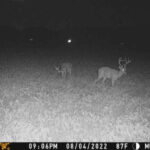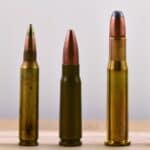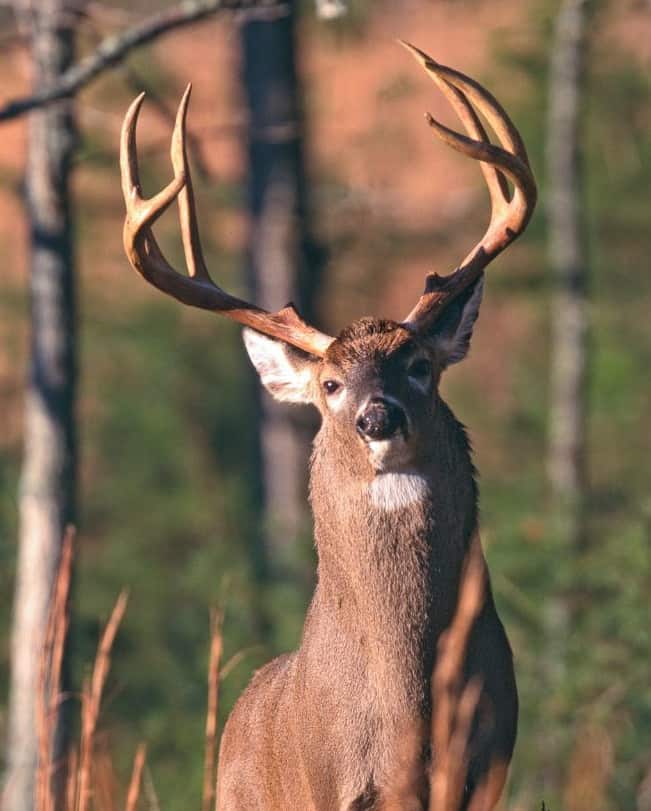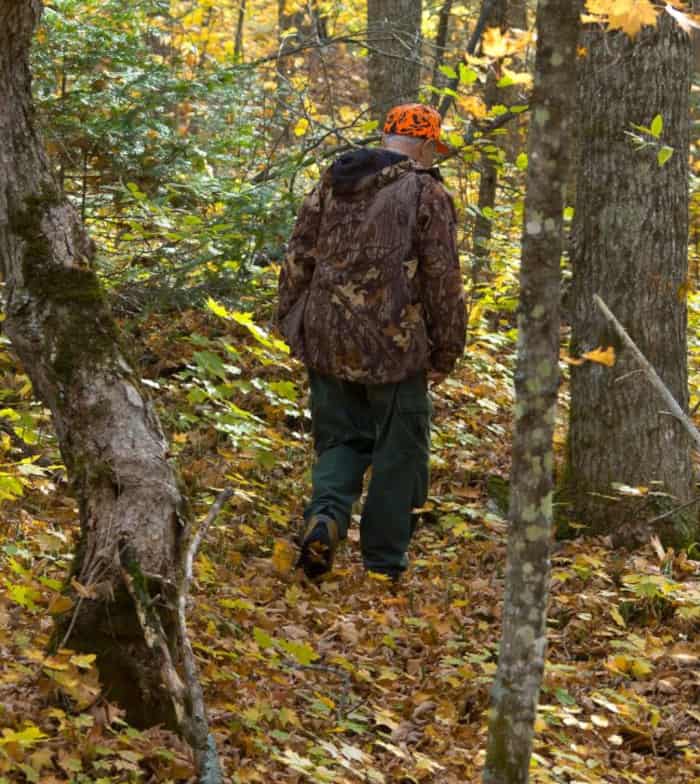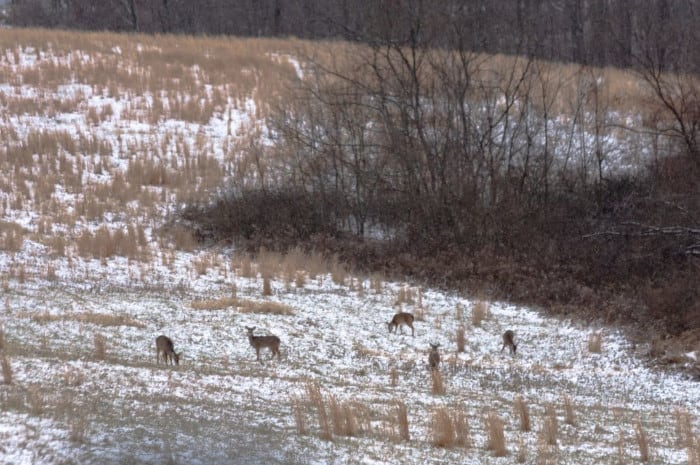A whitetail deer’s greatest weapon is its highly acute sense of smell. Based on that information, it’s no surprise that scent is their primary method of communication as well. Not only is it the scent they carry on their bodies, but also the specific scents they leave behind. The primary way that deer leave their scent is through a scrape and licking branch (which is usually located right over the scrape location. So, with almost any conversation about deer scrapes, there comes a question of how often do deer visit scrapes?
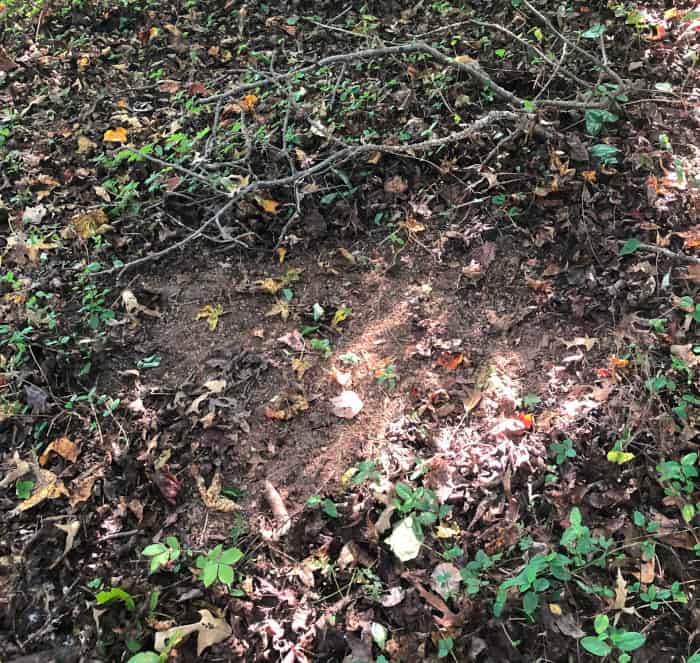
I find scrapes one of the most fascinating behaviors exhibited by whitetail deer, as it seems to be a way to communicate social, sexual, and physiological messages from deer to deer. I’ve been fortunate enough to have watched hundreds of hours of trail camera videos and images of both existing scrapes and scrapes being created.
What Is A Deer Scrape?
A deer scrape is an area of the ground that a buck has marked with his hooves and antlers. These areas typically have been cleared of leaves and ground debris and can range from a few feet wide to several feet in diameter.
Most scrapes are made just under a low-hanging tree branch, commonly called a “licking branch” or “marking branch.” In my experience, the buck identifies the licking branch first, then creates the scrape area directly under that branch.
Deer signs such as tracks, droppings, rubs on trees and other structures, bedding sites, and feeding sites accompanying a scrape can all provide clues about how often bucks visit these areas.
If you do any research on deer scrapes, you’ll likely see that some deer biologists even break scrapes down into more specialized categories like:
Community scrape
A community scrape is one that several different deer, including does, visit. These scrapes are generally located in areas where several deer paths or trails converge. These are typically large in size and may give the false impression that they were done by a large mature buck. Bucks will also use these sites as gathering points where they can assess the size of potential competitors before engaging in combat or courtship displays.
In my youth, I once hunted over one of these scrapes for days with the idea that a monster buck had made this monster scrape, only to find out it was a community scrape being visited by several bucks and does regularly.
Primary scrape
A primary scrape is one that is visited often and is typically located in a strategic area near bedding or feeding areas. Most of the primary scrapes I’ve found are located within 50 yards of a bedding area. Although these scrapes are primarily visited at night (as most scrapes are), they can be an excellent area to hang a stand as you may catch a buck cruising to bed.
Secondary scrape
A secondary scrape is one that is created and then not visited regularly. This type of scrape is more often created by a younger buck and is only visited a few times, then forgotten.
Boundary scrape
Boundary scrapes are done by bucks in an effort to define their territory. Boundary scrapes are visited frequently and may be visited by more than one buck. Most boundary scrapes are found along game trails, old logging roads, and field edges. A key point with boundary scrapes is that they are typically located in close proximity to another scrape forming a line (which I’ll get into more detail below).
Mock Scrape
A mock scrape is an artificial, man-made scrape designed to attract deer. Hunters create them in an effort to draw in a mature buck that comes into the scrape to mark it with his scent. The ongoing debate about the effectiveness of mock scrapes is worthy of a separate post, which I’ll try to complete here before long.

What’s A Scrape Line?
A scrape line is a series of scrapes that bucks use in traditional mating and territorial behaviors. These scrapes are most commonly found along game trails and travel corridors where deer move throughout the woods. A scrape line consists of several individual scrapes located within close proximity to one another, sometimes forming an almost continuous track across the landscape.
A scrape line can provide hunters with helpful insight into deer behavior and habitat selection, especially before the rut. In addition, by observing these areas with trail cameras, you can gain some knowledge about how often and when bucks revisit these territorial markers.
The Typical Scraping Process
In my experience, the scraping process starts when a buck identifies a specific area he wants to mark. He then identifies a licking branch or low-hanging branch that he can use for scent marking. He then licks and chews the branch while rubbing his forehead, snout, and mouth over the branch.
Once that is completed, he will use his forelegs to scrap away the leaves and other debris on the ground in an effort to get to the bare earth. Once the spot is successfully cleared of debris, the whitetail buck then aggressively urinates on the bare soil. This urine serves as both a territorial warning and contains pheromones to help him attract a receptive doe.
The entire process is designed to leave as much of his scent as possible on the ground and on the low-hanging branch.
Here’s a great video of a huge buck actually creating a scrape:
How Often Are Bucks Coming to a Scrape?
Although bucks continually mark their territory with scrapes year-round, the peak season for scrape activity is October to December, during the pre-rut, rut, and post-rut phases. During the peak of the rut, scraping activity will be at its highest.
It’s also worth noting that the age of the buck population in an area also seems to play a role in the level of scraping activity. Bucks that are 2.5 years old and up seem to be more aggressive in their scraping activity versus bucks that are under 2.5 years old.
While the younger bucks so visit scrapes, they are less likely to mark the scrape with their scent. Deer biologists believe this behavior may be tied to their unwillingness or lack of interest in challenging a mature or dominant buck.
Large whitetail bucks may not return to every scrape they create; instead, they tend to focus on a few specific scrape sites in order to maintain their condition over time. Scraping activity tends to peak around the full moon when visibility is at its highest.
During this period, mature bucks may visit up to six to ten different scrapes per night while monitoring any changes since their last visits. This behavior helps those bucks keep track of other bucks (and possibly does) in the vicinity.
Unfortunately, deer biologists have learned that as much as 85% of all scraping activity occurs at night, so hunting directly over a scrape (even an active one) may not be a sure thing.
Hunting Over a Scrape
Specifically hunting over a scrape is one of those hotly debated topics in the deer hunting world. For the most part, I prefer to view scrapes (especially a fresh scrape) as a sign of deer activity in the area, but I don’t find that hunting directly over a scrape (even an active one) is the best use of my time in the woods. Since only about 15% of scrapes are visited by deer during daylight hours, hunting a scrape with the expectation that a mature buck will specifically visit is a long shot in my book.
That being said, I do believe that hunting around a scrape can be potentially beneficial in two specific scenarios:
During the Rut
Scrape activity is most aggressive during the rut, so hanging a stand near a scrape can be beneficial, but probably not how you think. Scrapes attract does as well as bucks, and where there are does, bucks are sure to follow during the rut.
This approach can be especially effective in situations where you can’t pin down a specific food source that the does are using.
Hunting a Scrape Near Another Attractor
Hunting over a scrape with hopes that a big buck visits during shooting hours is a low-percentage approach. However, hunting near a scrape with another deer attraction nearby can be worthwhile.
For example, I’ve had some success hunting an active scrape that is near a known bedding location. In that situation, I try to hang a stand downwind from the active scraped area because, in my experience, most mature bucks seem to come around a scrape from the downwind side. While they don’t seem to go directly to the scrape in daylight hours, they are moving in the area. Also, I have a chance to encounter them entering or exiting the bedding area.
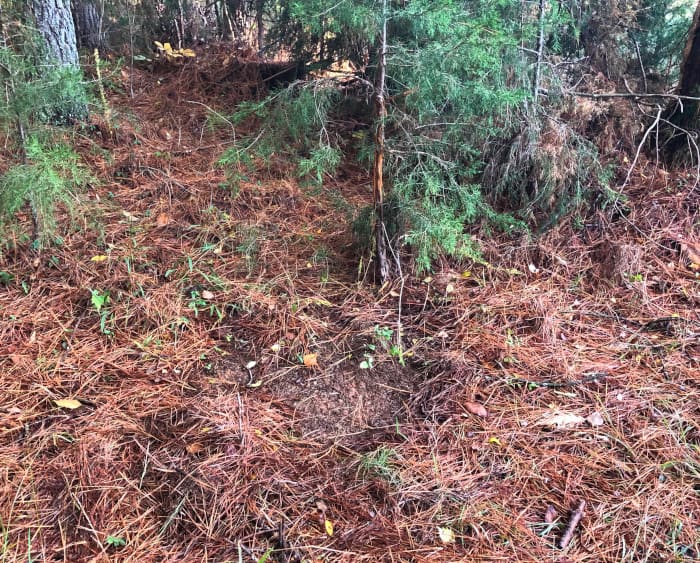
FAQS
Here are some commonly asked questions that I see about deer scrapes and how often they are visited:
Do does make scrapes?
While I’ve never seen a doe create a scrape, I have seen does visit scrape sites many times. I’ve never witnessed a doe paw the ground or urinate at a scrape, but I have observed them leaving their scent on the licking branch.
When do deer make scrapes?
Deer scrapes are created throughout the year as a means for bucks to mark their territory or area. Depending on the location, mating-based scrapes are typically created in late September to early November.
So, technically speaking, bucks never really stop creating scrapes throughout the year.
Are mock deer scrapes effective?
Mock scrapes can potentially draw in some deer, but, in my experience, they struggle to compete with a natural deer scrape. Even with the use of commercial scents, a mock scrape just doesn’t have the same draw as a natural deer-made scrape.
Does every scrape have a licking branch?
Most scrapes have a licking or low-hanging branch that deer use for scent-marking purposes. However, I have encountered a few scrapes that did not appear to have an associated licking branch. I suspect that they were done by young bucks and may have been their first attempt at a scrape.

Born and raised in Indiana, Brantley spent his youth chasing deer and turkey and, along the way, developed a passion for bowhunting. Although he still enjoys other types of hunting, his true passion is bowhunting, and he has or will author most all the bowhunting content on this site. Outside of work, Brantley is married and the father of two beautiful little girls. Brantley has worked in the hunting industry, with an emphasis on archery and bowhunting, for more than ten years.

